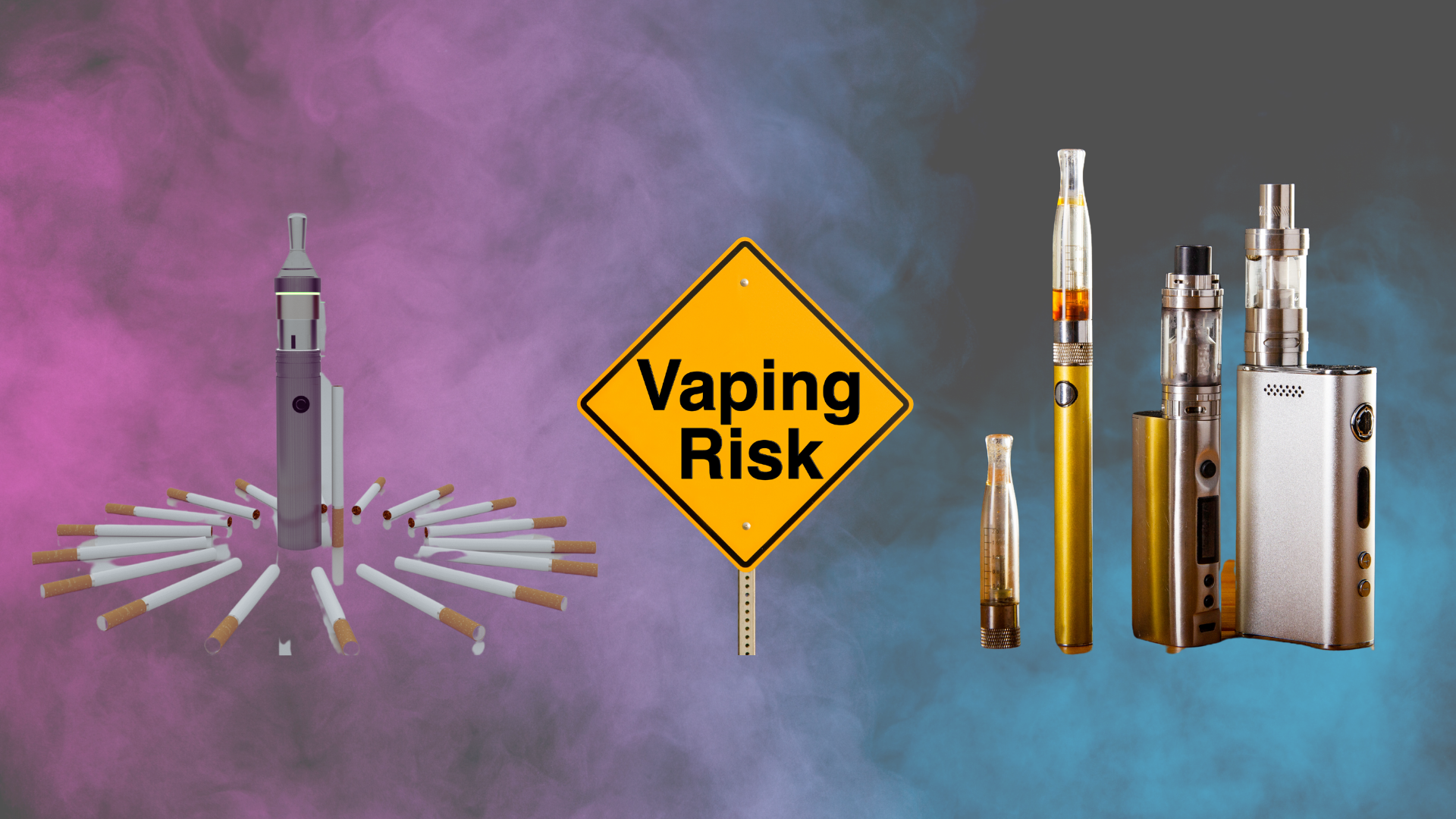
What are E-Cigarettes?
E-cigarettes have gained huge popularity around the world. As of 2019, there are more than 460 brands of e-cigarettes with as many as 8.1 million users. The United States alone spent 7 billion dollars on e-cigarettes in 2018. These devices use a liquid solution (juice) which is heated and then the aerosol is inhaled. Most liquids contain nicotine, the addictive substance found in tobacco products. According to the CDC, some e-cigarette claiming to have 0% nicotine have been found to actually contain nicotine.
“It’s Just Vapor”
E-cigarettes are loosely controlled by the government, and it is difficult to draw conclusions about many of the safety claims that the manufacturers make or imply. The Be Well Solutions Team often hears people say “it’s just vapor”, assuming that this means there is no danger. It is not a water-based mist that is inhaled. The sweet-smelling cloud is a biproduct of harmful chemicals such as ultra-fine particles and heavy metals, volatile organic compounds, along with flavorings and chemicals that have been linked to various cancers and lung disease. Although there are fewer overall chemicals in electronic vaping liquids, there are still harmful chemicals. One cartridge can contain up to an entire pack of cigarettes worth of nicotine in them (example is the JUUL pods). Where someone may not smoke an entire pack of cigarettes in a day, someone may inhale a fruit-flavored JUUL cartridge much faster.
Safety
Remember, in the beginning of the 20th century, cigarettes were felt to be safe and lung cancer was extremely rare. By the middle of the 20th century, lung cancer became the leading cause of cancer death in our country (a position it continues to hold today), and cigarette smoking continues to be a major health hazard. Science and the truth caught up and we saw the harm in inhaling smoke from a stick. Much like what we saw from cigarettes advertising, don’t be fooled by the e-cigarette/vaping advertisements and safety claims. No one should consider e-cigarettes safe or without potential long-term risk. Manufacturers promote “vaping” as safer than traditional tobacco use and a way to stop smoking altogether. However, critics say that e-cigarettes are just another way to get people hooked on a lifetime habit and point to flavors such as “watermelon” and “chocolate” as ways to attract young consumers.
Our Teens
JUUL uses nicotine salts to deliver nicotine that is less harsh on the throat and can contain as much nicotine as a pack of 20 cigarettes. This is one of the reasons JUUL is appealing to youth. The other is the kid-friendly-flavors in a compact non-detectable-by-adults cartridge.
Action is being taken by the FDA. As of 2020, the most used flavor of e-cig was fruit and mint. Youths say it was the flavor, not the nicotine, for the reason they started vaping in the first place. Did they want the taste without the calories? It was not the nicotine after all! With a goal to decrease use in January of 2020, the FDA prohibited the sale of youth-appealing prefilled cartridges in any other flavor than menthol or tobacco.
Our Children
If it smells like candy, it must be candy? According to the CDC, about half of calls to poison control for children under the age of 5 were due to children being poisoned by e-cigarettes. They are dangerous to adults and to the children that find them.
